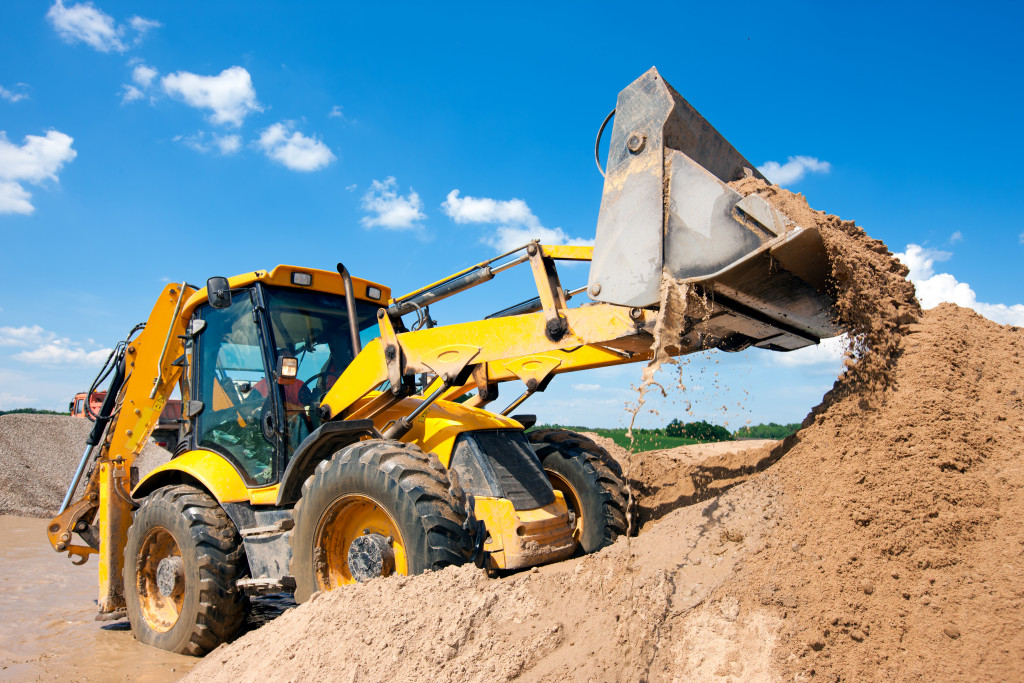To work, any construction site requires a large number of resources, including people and materials. Machines and equipment transport resources in and around construction sites and do some tasks that humans can’t do well or at all. Construction equipment comes in various sizes and designs, ranging from little ditch-digging machines to massive hauling trucks.
Due to the huge demand for such machinery, there’s a huge scope for doing business. You can start a hydraulic hose franchise which does well if you pick a good location. Contractors can spend a lot of money on construction equipment. As a result, good management is required for the best return on investment.
Customers may be dissatisfied as a result of downtime caused by equipment failure, and future projects may be challenging to win. For buying construction equipment, you have to contact a dragline excavator, bulldozers, graders, wheel tractor scraper. As a result, it’s critical to put in place effective measures to extend the life and productivity of your construction equipment. Here are five practical ideas for you to consider.
How Do You Use Machinery?
Know the Capacity of Your Equipment
Each piece of heavy machinery is made for a particular job and comes with a set of accessories or spare parts. Operators can damage equipment by using it for tasks that are not compatible with its functions, repairing it with incompatible spare parts, or using incorrect attachments.
As a result, it’s critical to follow the manufacturer’s instructions for using and repairing your construction equipment. Please keep in mind that some machines are designed to lift and move objects over a particular weight limit, and operators must be aware of these restrictions.
When equipment is used beyond its performance standards and limitations, it loses efficiency and effectiveness, which can lead to malfunctions that put workers in danger. Mechanical and safety issues might be exacerbated by overloading, abuse, or extensive travel.
Conduct Inspections Immediately After Use
Checking your construction equipment after each use is crucial to determining whether it is still in excellent working order and whether it can be used for future jobs. Your machines may appear to be in good working order after returning from the construction site, but they may have suffered performance degradation or damage that is not obvious.
As a result, it’s critical to inspect the equipment when it’s returned from the job site. You may seek compensation for machine downtime if your machines are destroyed after being leased to a client. Consider adopting an automated asset management system to keep track of and view the details of your equipment.
Give Your Operators the Right Training
A well-trained operator can extend the life of your construction equipment significantly. A well-trained operator can lessen the risk of equipment damage by understanding the equipment’s capabilities and limitations, as well as identifying potential problems.
Manual reviews for specific equipment, system demonstrations and controls, routine preventive maintenance checks for machines, and testing to ensure that the operators have learned appropriate skills and knowledge are part of a thorough heavy equipment operator training program. Before working with specific equipment, your operators may need more qualifications.
Perform Routine Maintenance

Establishing a schedule for checking and maintaining equipment is the first step in performing maintenance. To detect faults, you must inspect each piece of equipment daily. Fluid levels, tire pressure, oil piping leaks, and any looseness, cracks, or loss of essential components could all cause difficulties.
Routine maintenance, such as oil or brake replacement, must be performed according to technical standards and arranged ahead of time. If your construction equipment is subjected to very extreme environmental conditions, Besides, you may need to change the manufacturer’s guidelines. For example, in dusty places, air filters may need to be replaced.
It’s recommended that you utilize an automated asset management system to ensure that routine maintenance works. You can easily design maintenance schedules, assign personnel to do inspections, and keep track of service logs with this system. All these procedures can be carried out using a single system.
Make the Most of Downtime
Even if you and your entire team have worked to ensure everything runs, downtime still occurs. There is nothing more you can do in this situation but make the most of it. You can do a few things when you have some free time. You can handle and produce paperwork, transport equipment from one area to another, ship certain items, inspect the condition of your other equipment, and maintain your transportation, including changing the gas or oil.
Keep these points in mind and elongate the use of your equipment. Using these methods to manage your construction machines will save you time and money. This saving will result in better opportunities to win future projects and maintain your business reputation.



